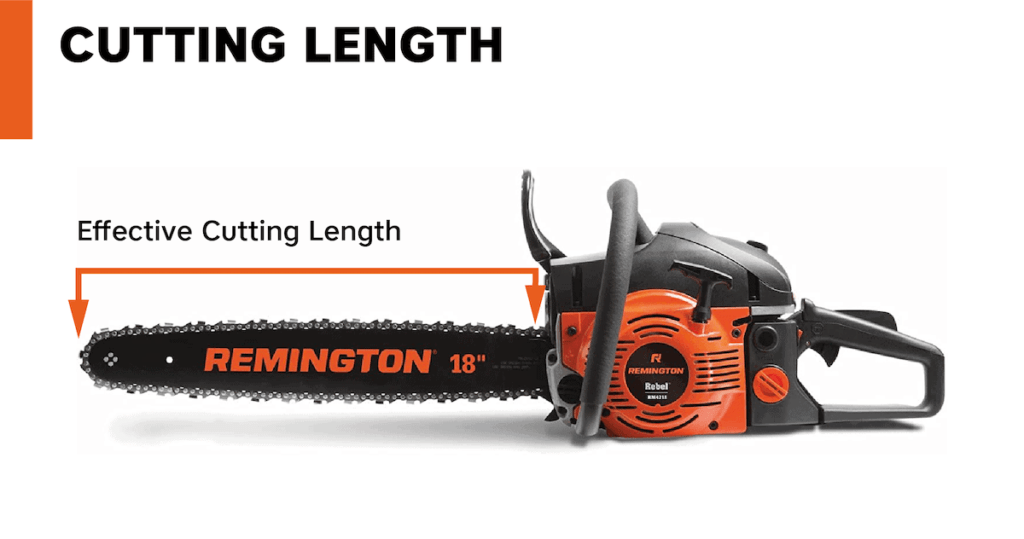What Size Chainsaw Do I Need? Our Buying Guide
-
Pete Ortiz
- Last updated:
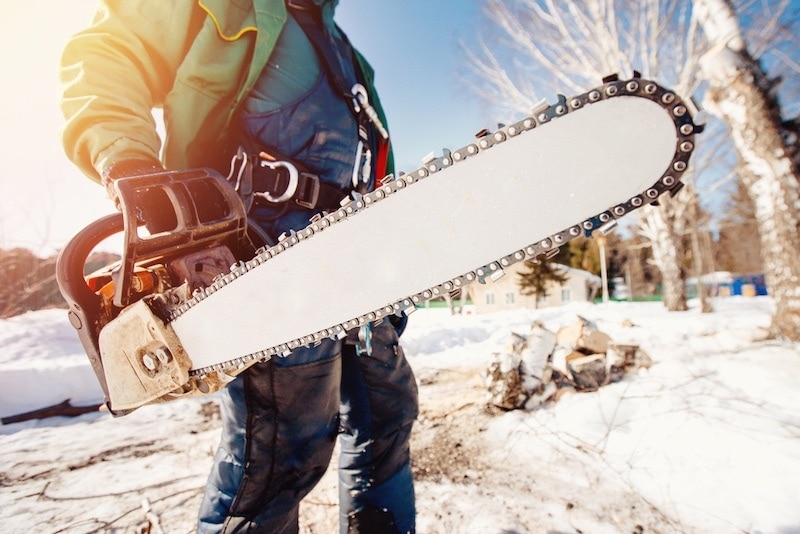
There are good reasons why most professionals own several chainsaws. They are inherently dangerous tools, and using them properly requires matching the job to the correct tool. The biggest, most powerful saw might be able to fell a mighty oak, but using it to cut up a fallen limb is just as dangerous as using a chainsaw intended for pruning cherry trees to cut down a dead hardwood full of knots.
Whether you’re buying, renting, or borrowing, knowing what to look for in a chainsaw is an important step to completing the job safely.
Before You Begin: Do You Need a Chainsaw?
Before you start shopping for a chainsaw, you have to answer the question: Do I need a chainsaw? Well, that depends on the work involved. Given the wide variety of landscaping tasks you might encounter, there’s a corresponding tool that’s right for the job.
Some tasks that seem like they require a chainsaw such as topping an overgrown tree or clearing some low-hanging limbs would be better off with an electric pole saw. Cutting wood at a difficult angle or anything that might contain metal calls for a reciprocating saw. And, of course, there’s very little use for a chainsaw within the confines of the average wood shop; it’s an outdoor-only type of tool.
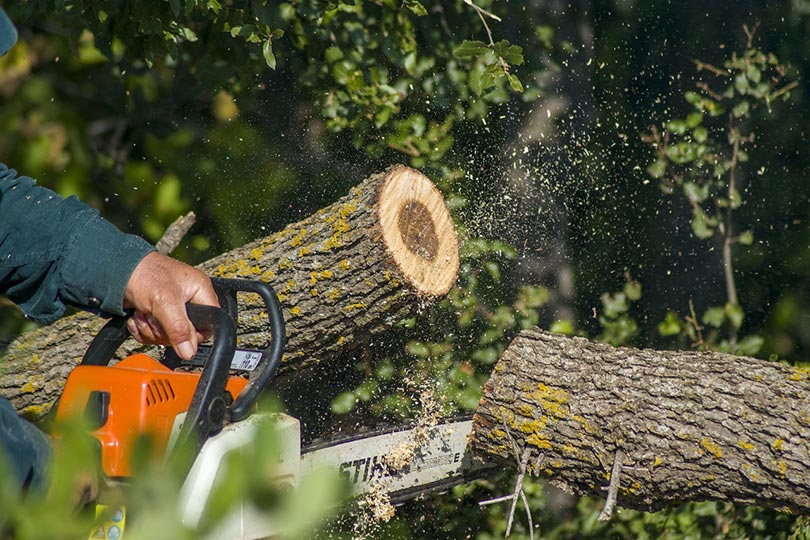
Chainsaw Basics
You’ll want to know a couple of the basic dimensions related to your chainsaw: the bar length and size of the engine. In both cases, larger numbers are used for bigger trees.
Bar Length
The bar is the tongue-shaped piece of metal that extends out from the engine and handle. It’s what the blade goes around when it is spinning. Bars are made in 2-inch increments, starting at 12 inches and going up to 42 inches. Some chainsaws have smaller bar lengths, but they are intended for only the smallest of pruning jobs. Most chainsaws intended for homeowner use run from 14 inches to 18 inches, and they go up in size to the 42-inch monsters intended for professional use.
There’s a paradox when it comes to cutting length, too. An 18-inch chainsaw may or may not be exactly 18 inches long, and the effective cutting length of the bar is usually around 16 inches.
Engine
When it comes to the engine that spins the blade, the size matters. Engine displacements are measured in cubic centimeters (cc), and the bigger the number, the more powerful the gas engine is. Gas-powered chainsaws typically run between 30cc and 50cc, with the bigger engines designed to pair with bigger bars for the most serious work.
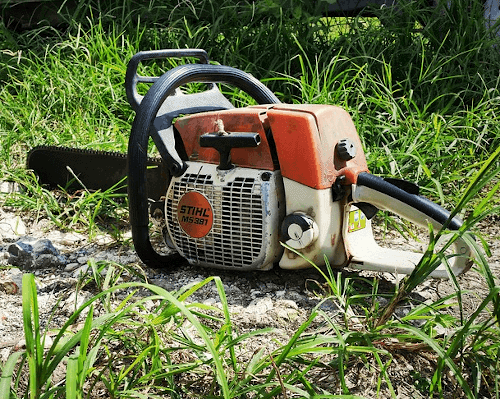
Gas or Electric?
So far, we’re assuming that you’ll wind up with a gas-powered chainsaw. They are the most popular and most readily available. An electric chainsaw is an option you can use in some cases. They are easier to start, and they’re much quieter because they draw their power from the outlet. They are also much less powerful.If you decide to choose an electric chainsaw, you’ll need to pick a size based on the bar length. They’ll also be smaller chainsaws. Electric chainsaws are measured in amps when looking at the power output. A chainsaw that has a battery will measure it in volts.
Size of the Work
The biggest factor that will determine the size of the chainsaw you need is the kind of work you’re doing. A good rule of thumb is that the diameter of the trees you cut regularly should be no more than twice the length of the bar on a chainsaw. That means a 20-inch chainsaw can handle a 36-inch tree (remember, effective cutting length is roughly -2 inches of the bar length). Professional chainsaws can take that up to 2.5 times the bar length.
A quick estimate of the trees or brush you need to cut will help you decide which model to use. The size and power of the chainsaw you need depends on whether you need it for light, medium, or heavy-duty work.
Chainsaws for Light Work
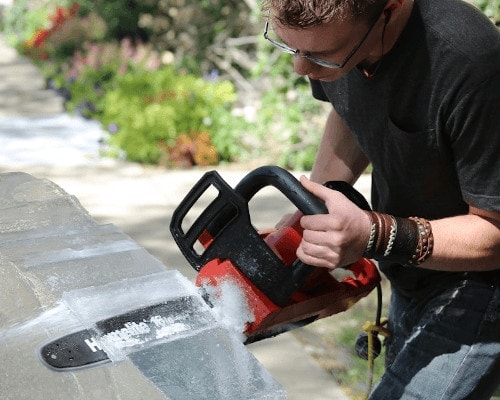
If you need a chainsaw for pruning limbs or cutting down saplings or small trees of the softest wood, get a small chainsaw. They are ideal when trimming limbs above your head because they’re the smallest, lightest, and safest.
Pruning work is appropriate for electric chainsaws, either corded ones or models that use batteries. Look for bar lengths of no larger than 14 inches and engines in the 30-40 cc range.
Chainsaws for Medium Cutting

Once you start getting into chainsaws intended to cut down trees or cut logs into firewood, you can overlook most electric chainsaws since they’re less powerful. You’re also looking at bar lengths of 16-18 inches with engine displacements of 30cc to 50cc.
All-purpose gas chainsaws are perfect when you have to clean up after storms or cut down small trees. They aren’t powerful enough to do a lot of work daily, but they will provide enough power to bring down the occasional tree if called for.
Chainsaws for Heavy-Duty Use
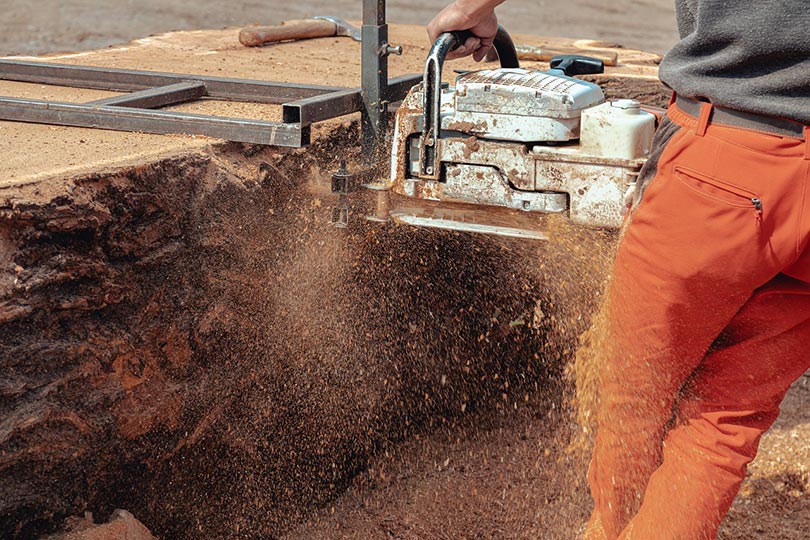
Ranchers or people who live along the fringes of the wilderness might need bigger, more powerful chainsaws, especially if they heat their homes with wood over the winter. In general, heavy-duty chainsaws have a bar length of 20-24 inches and engine displacements of 50cc to 60cc. They are not designed for smaller jobs like pruning trees. In fact, their large bars can make them dangerous for those jobs.
Professional Grade Chainsaws
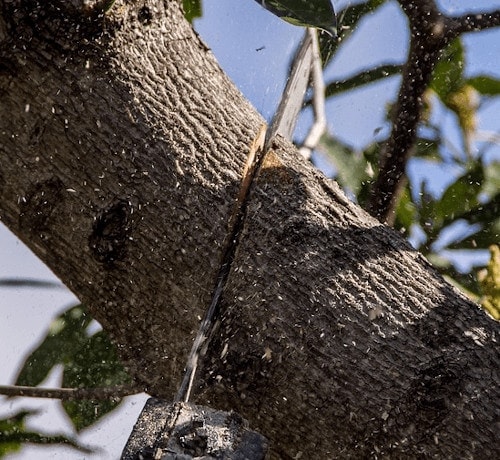
Chainsaws with bars between 24-42 inches and engine displacements of more than 50cc are the most savage of beasts. They’re intended for professionals and farmers who cut down large trees frequently.
If you only have that kind of work to do infrequently, consider hiring a tree professional. Professional-grade chainsaws are big, dangerous, expensive tools.
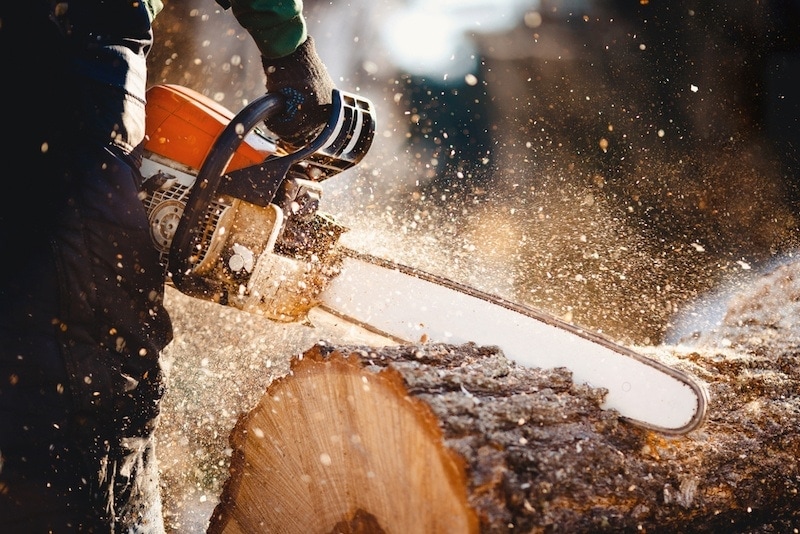
In Conclusion
Figuring out the size of the chainsaw you need starts with knowing a little about how chainsaw sizes are determined. It’s vital to buy a model with an appropriate bar length and engine to deliver the necessary power. You’ll also have to decide whether you can use an electric (corded or cordless) or gas-powered chainsaw.
For light work like pruning, go with smaller bar lengths and smaller engines. The next step up is a standard chainsaw with a bar smaller than 20 inches. You’ll need something a little more powerful if you need to cut down larger trees. The biggest, most powerful saws are intended for professionals and people whose lifestyles demand they do frequent, heavy-duty cutting.
- https://sawfinding.com/how-to-measure-chainsaw-bar/
- https://www.thoughtco.com/purchasing-and-using-an-electric-chainsaw-1342748
- http://forestryforum.com/board/index.php?topic=5100.0
- https://backyardgadget.com/what-chainsaw-size-to-buy/
- https://www.doityourself.com/stry/the-differences-in-chain-saw-power
Featured Image Credit: Parilov, Shutterstock
Contents


